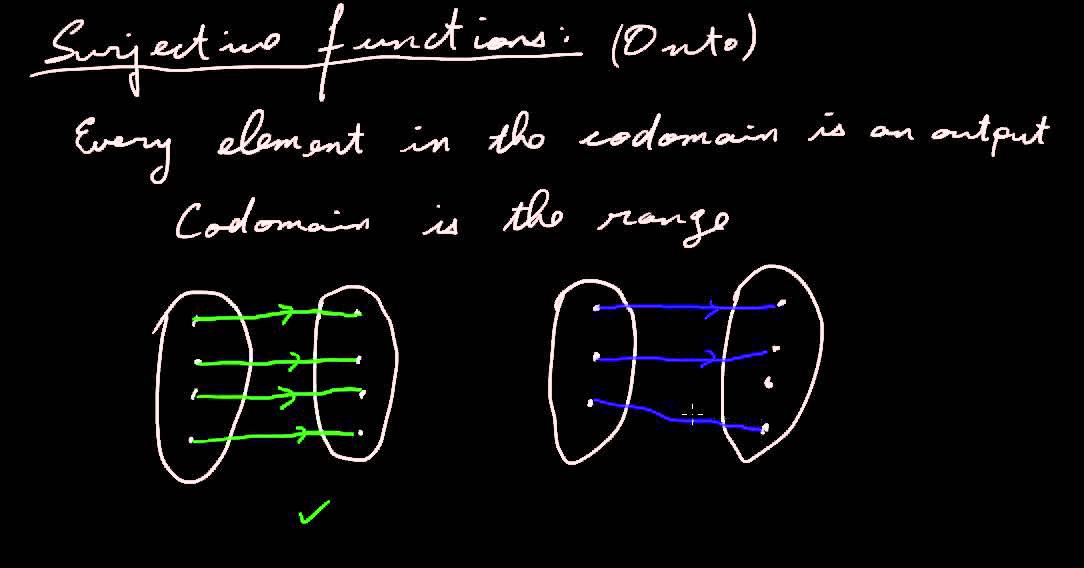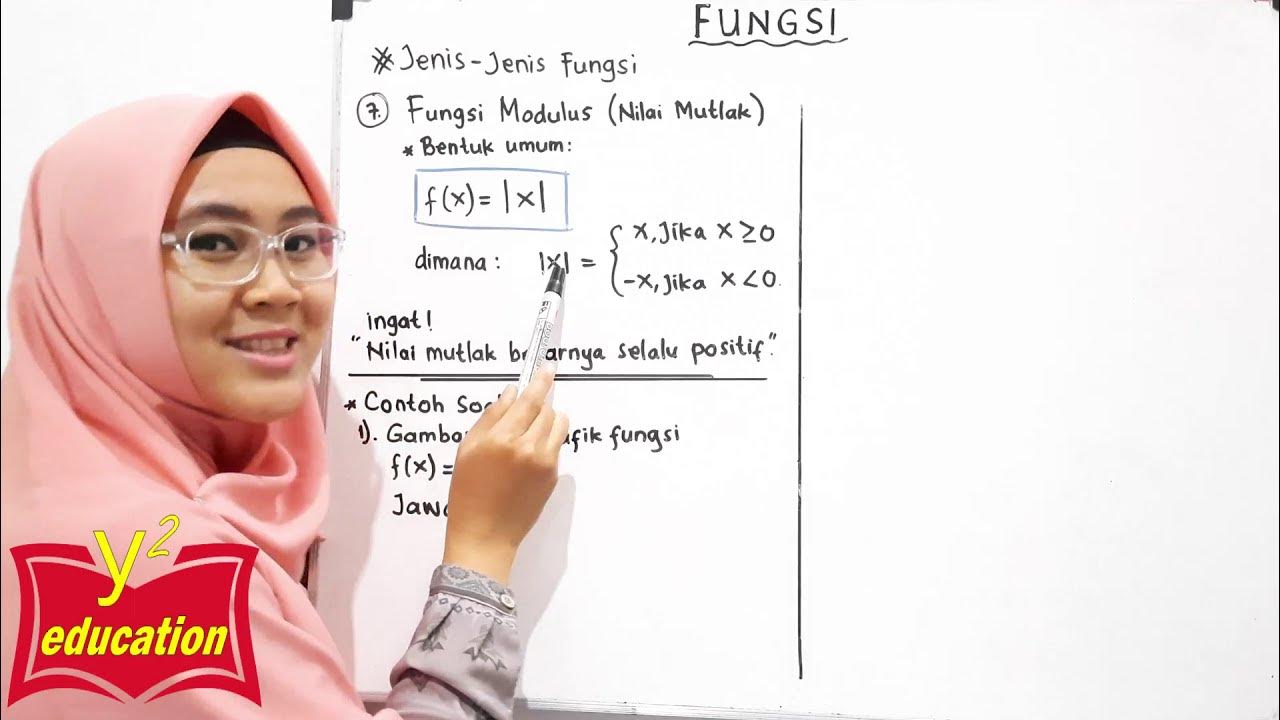FUNÇÃO INJETORA, SOBREJETORA E BIJETORA \Prof. Gis/
Summary
TLDRIn this lesson, the instructor explains the differences between injective, surjective, and bijective functions. Using examples, they demonstrate how an injective function maps distinct elements from set A to distinct elements in set B, a surjective function covers the entire codomain, and a bijective function is both injective and surjective. The instructor walks through practical examples with clear diagrams to help viewers understand how to classify functions. The lesson emphasizes key points like no overlap for injective functions and no leftover elements for surjective functions, providing an engaging and thorough explanation.
Takeaways
- 😀 An injective function (injetora) maps distinct elements from the domain (A) to distinct elements in the codomain (B).
- 😀 To determine if a function is injective, ensure no element in B has more than one preimage in A.
- 😀 A surjective function (sobrejetora) covers all elements of the codomain (B) with at least one element from the domain (A).
- 😀 For a function to be surjective, its image must be equal to its codomain; no element in the codomain should be left out.
- 😀 A bijective function (bijetora) is both injective and surjective: it has a unique mapping for each element and covers the entire codomain.
- 😀 The function f(x) = 3x + 2 is an example of an injective function, where each element in A maps to a unique element in B.
- 😀 The function f(x) = x^2 demonstrates a surjective function, where the image equals the codomain and no element is left out.
- 😀 A bijective function, like f(x) = x + 3, satisfies both injective and surjective properties, meaning it’s a one-to-one correspondence between sets A and B.
- 😀 In an injective function, no element in the domain (A) maps to multiple elements in the codomain (B), ensuring one-to-one correspondence.
- 😀 When analyzing functions using diagrams, check if there are any leftover elements in the codomain or if multiple domain elements map to the same codomain element to classify the function correctly.
- 😀 A function may be injective without being surjective or vice versa, and bijection occurs only when both properties are satisfied.
Q & A
What is an injective function?
-An injective function, also known as a one-to-one function, is a function where every element in the domain corresponds to a unique element in the codomain. In other words, no two distinct elements from the domain map to the same element in the codomain.
What is the key characteristic of a surjective function?
-A surjective function, also known as an onto function, is a function where every element in the codomain has at least one element from the domain mapped to it. This means that the image of the function is equal to the entire codomain.
How do you identify if a function is bijective?
-A bijective function is one that is both injective and surjective. This means that each element in the domain maps to a unique element in the codomain (injective), and every element in the codomain is covered by at least one element from the domain (surjective).
Can a function be injective without being surjective?
-Yes, a function can be injective without being surjective. This happens when every element in the domain maps to a unique element in the codomain, but not all elements in the codomain are covered.
Can a function be surjective without being injective?
-Yes, a function can be surjective without being injective. This occurs when all elements in the codomain are mapped by the function, but some elements in the domain may map to the same element in the codomain.
What is the definition of the codomain in the context of functions?
-The codomain of a function is the set of possible output values for the function. It is the set into which all outputs of the function are supposed to fall, though not all elements in the codomain may necessarily be an output.
In the example of the function f(x) = 3x + 2, is it injective? Why or why not?
-Yes, the function f(x) = 3x + 2 is injective because for each distinct element in the domain (set A), there is a distinct corresponding element in the codomain (set B). No two different inputs give the same output.
Why is a function considered surjective when the image equals the codomain?
-A function is considered surjective when its image is equal to the codomain because this means that every element in the codomain has at least one element in the domain mapped to it, covering the entire codomain.
What would happen if a surjective function has elements in the codomain that are not covered by the function's image?
-If a surjective function has elements in the codomain that are not covered by the image, then the function would no longer be considered surjective. For surjectivity, all elements of the codomain must be covered by the function's image.
What is the importance of checking whether a function is both injective and surjective when determining if it's bijective?
-The importance lies in the fact that a function must satisfy both injectivity (no two elements from the domain map to the same element in the codomain) and surjectivity (the entire codomain is covered by the function's image) to be considered bijective. If either condition fails, the function is not bijective.
Outlines

This section is available to paid users only. Please upgrade to access this part.
Upgrade NowMindmap

This section is available to paid users only. Please upgrade to access this part.
Upgrade NowKeywords

This section is available to paid users only. Please upgrade to access this part.
Upgrade NowHighlights

This section is available to paid users only. Please upgrade to access this part.
Upgrade NowTranscripts

This section is available to paid users only. Please upgrade to access this part.
Upgrade NowBrowse More Related Video

PERBEDAAN FUNGSI INJEKTIF, SURJEKTIF DAN BIJEKTIF LENGKAP DENGAN CONTOH SOAL

Matematika SMA - Relasi dan Fungsi (4) - Sifat-Sifat Fungsi, Fungsi Injektif Surjektif (A)

Injective Surjective Bijective Functions

PEMBUKTIAN TRANSFORMASI | Geometri Transformasi #2

Fungsi #Part 13 // Jenis-jenis Fungsi // Fungsi Modulus // Fungsi Mutlak // Grafik, Domain , Range

Real Analysis | Set Theory | Set Theory Basic Definition & Examples
5.0 / 5 (0 votes)